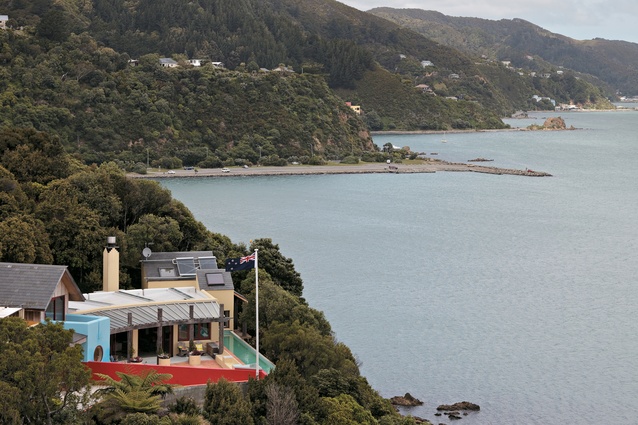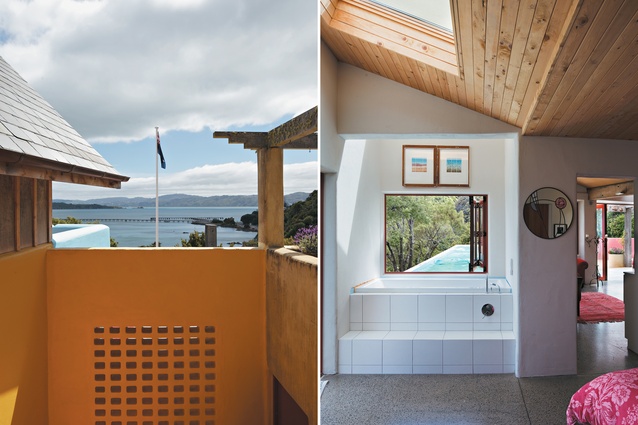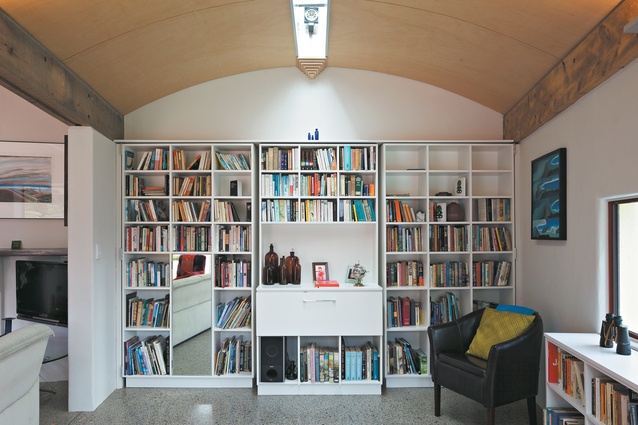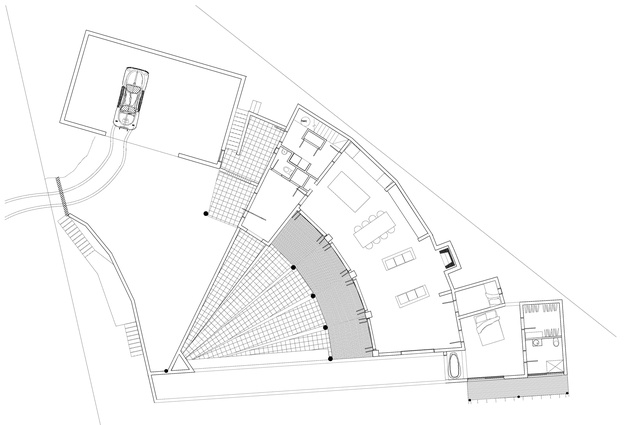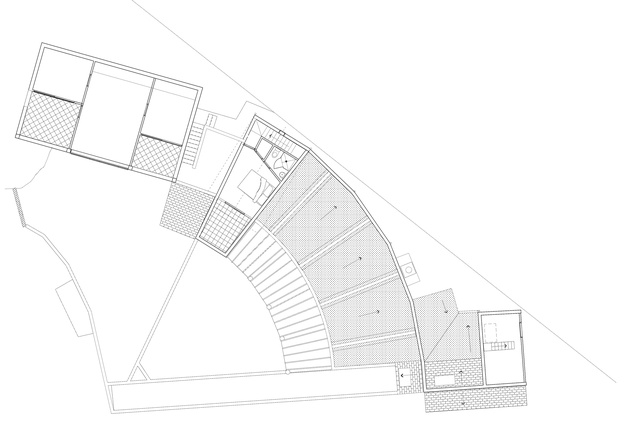Houses Revisited: Idyll at Sorrento
Revisit Gus Watt’s house for his family at Eastbourne: a hand-crafted expression of his design philosophy.
Christopher Alexander’s The Timeless Way of Building (Oxford University Press, 1979) is devoted to defining the nameless quality that makes things come alive. Alexander writes that this quality is not solely form, function or colour; neither is it “the spiritual quality of beautiful music”. The quality that Alexander describes as having no name is “so ordinary as well, that it somehow reminds us of the passing of our life”.
Although Alexander’s book is now 40 years old, it is still relevant, for two reasons. First, it awakens our consciousness to what is still the essence of timeless architecture: attention to the ordinary, which imbues structures and cities with life (Mies van der Rohe put this simply: God is in the details). Second, it invokes an era when time had more moments, when the natural rhythm of building played a role in design.
Is there time for timelessness these days? Christopher Alexander has a sage answer, which we’ll turn to shortly. Meanwhile we’ll look at Sorrento in Eastbourne, a house that, in many ways, offers evidence of the survival of the elusive trait.
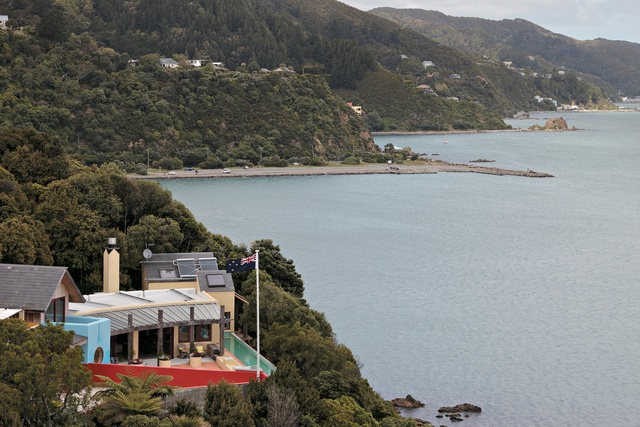
The story begins around the year that The Timeless Way of Building was published. After graduating from the School of Architecture in Auckland in 1968, Gus Watt returned to his home city of Wellington. “I knew the day I got out of school that I knew nothing,” he says. His first job, with Kofoed and Arnold, as part of a team of graduates charged with documenting the James Cook Hotel on The Terrace, provided real world education.
But just as important was that de rigueur rite-of-passage for budding professionals: building your own home. Gus found himself a section in Sorrento Bay, where he designed a house clad in cedar weatherboard and recycled Welsh slate. In keeping with the Wellington design gestalt of the 1970s, each room had its own level and roof; a large central area served as gathering space.
The proximity to other vacant properties in the neighbourhood prompted Gus, his wife Gill, and friends to purchase another section for development as townhouses. Partnerships and town planning regulations changed; multiple units were no longer legal. Gus bought out his partners, and from the drawing board in his chilly home office on the shaded side of the valley watched the sun envelop the vacant section. A project was hatched!
The first house was sold in 1993 and the Watts, by then a family including three offspring, plus Doberman, moved into Wellington city. For 15 years Sorrento Bay was a weekend and holiday destination. “Doing the work of building” appealed to Gus, as much as the trial-and-error process of the design/build endeavour. This second house was initially envisaged as having two bedrooms but was designed and redesigned as time and life marched on; it now has a master bedroom with en suite, a grandchildren’s snuggery, guest loft, garage, and lap pool, along with the usual service areas.
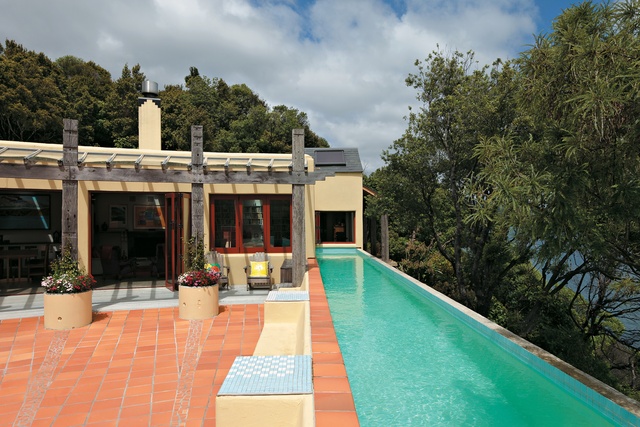
Christopher Alexander notes that the built environment arises because of patterns. Architects have “their own pattern languages, the condensation of their own experience, in the form of private rules of thumb” which come into play during the documentation and construction process. For Gus, the rules of thumb encompassed a repertoire of the ordinary: elements such as sunlight, circles, lines, solstice, rainwater, reflection, and grass.
The most striking feature of the house is the presence of light. The entrance, a low contained space bordered by a mighty pivot door, is the threshold to five light-filled bays comprising the kitchen/dining/living/library area. The bays are surmounted by tapered vaults, each clad with honey-coloured Fijian kauri plywood bordered by weathered macrocarpa beams. A skylight channel at the apex of each vault has been faced with satin-brushed stainless steel tiles, whose varying orientations reflect light, both day and night, in stunningly beautiful patterns.
This effect is not the product of CAD. Hand-crafted experimentation with foil (sucked off in the wind), mirrors (too kitsch), and polished stainless steel (too bright) evolved into the solution that creates ever-changing rays and spectra. The north-west orientation, maximised by a wall of windows and doors leading onto a Mediterranean-style patio, along with further reflections from a sparkling 20-metre lap pool, lend this gathering area a heart-stopping illumination.
On the floor plane, radial delineations in blue and yellow mosaic tiles reiterate the overhead patterns, and extend into the patio. The insulated polished concrete floor is embedded with heating cables; the overall structure is concrete block and polystyrene with plaster inside and out. Double-glazing and an abundance of insulation repel the Wellington southerlies; a fireplace adds another light focus when the sun sets across the harbour.
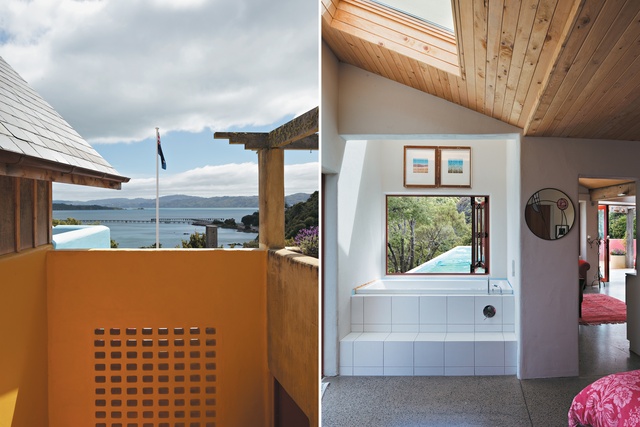
Gus says that his 1970s pattern language of a roof for each room has transformed into a bay per room. Flat ceilings in the master bedroom and kitchen are clad with Lawson cypress; this and cedar doors will emit a subtle, fresh fragrance for years to come. An early concrete roof design was replaced by timber because of cost. Nevertheless, the consulting engineer devised a design to accommodate 100mm of soil for the future planting of grass on the roof. Solar collectors on the en suite bathroom roof are visible from an office loft near by.
One of Christopher Alexander’s desirable patterns is glazing that offers surprise and delight as much as scenery. At Sorrento, visitors are quickly enticed, by light, to leave the entry; they also receive a treat upon departure. A round window frames the setting sun at the time of winter solstice. In the foreground, a flagpole is sited at the central point of the scheme’s pervasive radial lines. A slot above the circular frame guides a trickle of rainwater across the view – an homage to Louis Kahn. Yet another window puts a voyeur eyeball-to-eyeball with a swimmer doing laps in the pool.
To return to Alexander’s appreciation of timelessness: “Places which have this quality, invite this quality to come to life in us. And when we have this quality in us, we tend to make it come to life in towns and buildings… It is a self-supporting, self-maintaining, generating quality. It is the quality of life. And we must seek it, for our own sakes, in our surroundings, simply in order that we can ourselves become alive.” Timeless experiences, therefore, are essential. But they are few, and we can only cherish their magic, as I did at Sorrento.
This article first appeared in Houses magazine



